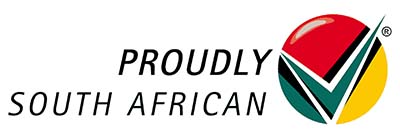Best practices in physical asset verification audits are all about planning, accuracy, and control.
Here’s a breakdown of the key points:
- Planning and Preparation
- Physical Verification
- Data Reconciliation and Reporting
- Continuous Improvement
- Training and Awareness
- Technology Integration
Strap in as we explore the best practices in Physical Asset Verification Audits, where precision meets compliance, and risk takes a backseat.
Key Facts
- Planning is key: Clearly define scope, objectives, and align with regulations like King IV and the Finance Companies Act in South Africa. Assemble a skilled team and allocate resources effectively.
- Physical verification essentials: Utilize accurate asset data, tagging systems, and assessment checklists for precise identification, condition assessment, and location verification.
- Data reconciliation and reporting: Analyze discrepancies, update registers, adjust valuations, and issue comprehensive reports with corrective actions for improved internal controls.
- Bonus best practices: Focus on continuous improvement, staff training for proper procedures, and leveraging asset management software for streamlined tracking and control.
Planning and Preparation
- Scope and Objectives: Clearly define what assets are being audited and what you hope to achieve (e.g., compliance, valuation, improved control). Align with relevant regulations like King IV and the Finance Companies Act in South Africa.
- Team Formation: Assemble a team with asset management expertise, including internal auditors and potentially external auditors for King IV compliance.
- Resource Allocation: Consider technology like barcode scanners, RFID tags, and asset management software to streamline the process. Schedule the audit to minimize disruption to operations.
Physical Verification
- Asset Identification and Tracking: Utilize accurate asset register data and physical tagging systems for seamless identification. Employ count teams for efficiency and double-check accuracy.
- Condition Assessment: Categorize assets based on condition (functional, damaged, obsolete) using standardized checklists for consistency.
- Location Verification: Cross-check asset locations with your register and update any discrepancies.
Data Reconciliation And Reporting
- Discrepancy Analysis: Investigate missing, damaged, or relocated assets, documenting findings and proposing corrective actions.
- Register Update and Valuation: Reconcile the physical count with the asset register and adjust depreciation schedules based on updated condition and location.
- Reporting: Issue a comprehensive audit report with recommendations for improvement. Implement corrective actions and improve internal controls to prevent future discrepancies.
Bonus Best Practices
- Continuous Improvement: Regularly review and update your asset management processes based on audit findings.
- Training and Awareness: Train staff on proper asset management procedures and the importance of accurate record-keeping.
- Technology Integration: Leverage asset management software for real-time tracking, automated reports, and improved control.
Conclusion
Conclusively, remember – regular audits aren’t just a necessity; they’re the secret sauce to thriving in asset management.
Keep the collaboration alive, embrace change, and watch your audits become the rockstars of efficiency.
There you have it, folks – the South African guide to Physical Asset Verification Audits.
It’s not just about numbers; it’s about people, processes, and a sprinkle of tech magic.








